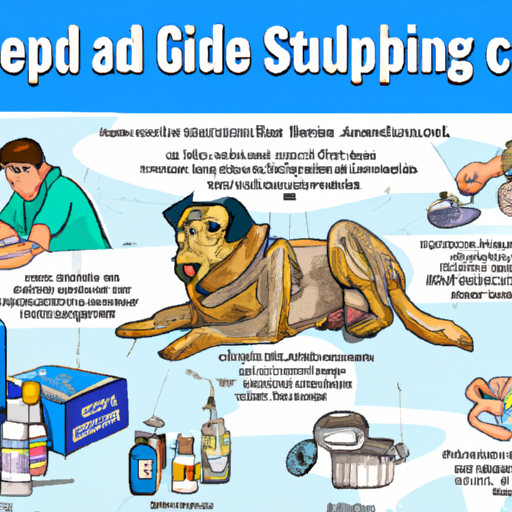Understanding Bacterial Infections in Dogs
Bacterial infections in dogs can be caused by a variety of factors. They can be the result of a wound, a secondary infection due to a weakened immune system, or an infection that has spread from another part of the body. Symptoms can vary greatly depending on the type of bacteria involved and the area of the body affected but can include lethargy, fever, pain, and loss of appetite. But don’t panic, as a caregiver, you can take steps to help your furry friend on the road to recovery.
Identifying the Symptoms
Firstly, you should be aware of the common symptoms of bacterial infections in dogs. These may include:
- Lethargy
- Fever
- Pain
- Loss of appetite
- Swelling or redness around a wound
Remember, these symptoms can be quite general and may be indicative of other health issues too. Thus, it’s crucial to consult with a veterinarian if your dog shows any of these signs.
Seeking Professional Help
When it comes to treating bacterial infections in dogs, the first line of defense is always professional help. Your vet will likely conduct a physical examination and may require a sample for testing. They may prescribe antibiotics to fight the infection and recommend rest and hydration to support recovery.
The table below summarizes the typical course of action:
| Step | Action |
|---|---|
| 1 | Physical Examination |
| 2 | Sample for Testing |
| 3 | Prescription of Antibiotics |
| 4 | Rest and Hydration |
Home Care and Recovery
While your vet will provide the primary treatment, there’s plenty you can do at home to support your dog’s recovery. Ensure your dog gets plenty of rest and stays hydrated. Keep a close eye on their wound, if applicable, for signs of improvement or deterioration. Keep their environment clean and as stress-free as possible.
Prevention of Future Infections
Prevention is often the best cure. Regular grooming, good nutrition, and routine vet check-ups can go a long way in preventing bacterial infections in dogs. Regular exercise can also boost your dog’s immune system and keep them healthy.
Frequently Asked Questions
Q: Can bacterial infections in dogs be prevented?
A: Yes, through regular grooming, good nutrition, routine vet check-ups, and regular exercise.
Q: What should I do if I suspect my dog has a bacterial infection?
A: Seek professional help immediately. The vet will likely conduct a physical examination and may require a sample for testing.
Q: What can I do at home to support my dog’s recovery?
A: Ensure your dog gets plenty of rest and stays hydrated. Monitor their wound, if applicable, and keep their environment clean and stress-free.
Remember, as a caregiver, your role is vital in identifying symptoms early, seeking professional help, and providing home care and prevention strategies. Stay vigilant and keep your dog’s well-being in mind, and you’ll be well-equipped to handle bacterial infections and ensure a speedy recovery for your furry friend.



